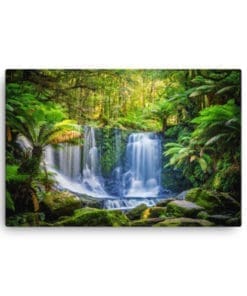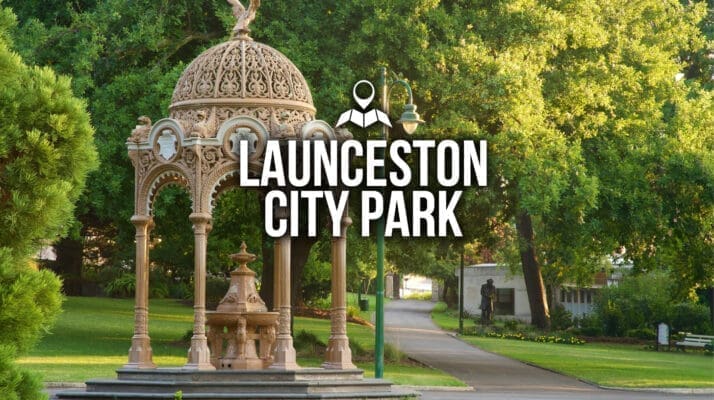A 6-Week Tasmania Road Trip – From Coastal Charm to Convict Trails
Here’s a 6-week campervan itinerary that covers a good mix of Tasmania’s popular attractions while incorporating as many free camps as possible. This itinerary will give you plenty of time to explore and enjoy each destination, considering a 2WD Camper Van’s capabilities and restrictions.
Highlights:
Week 1: Devonport to Cradle Mountain
Day 1-2: Devonport
Day 3-7: Cradle Mountain
Week 2: Cradle Mountain to Strahan
Day 8-9: Tullah
Day 10-14: Strahan
Day 15-16: Queenstown
Day 17-21: Hobart
Week 4: Hobart to Port Arthur and Tasman National Park
Day 22-24: Bruny Island
Day 25-28: Port Arthur and Tasman National Park
Week 5: Tasman National Park to Freycinet National Park
Day 29-30: Swansea
Day 31-35: Freycinet National Park
Week 6: Freycinet National Park to Launceston
Day 36-38: Bicheno
Day 39-42: Launceston
Please remember to check the current conditions of these campsites and attractions before you visit, as availability and accessibility may vary.
Keep Reading for a break down of each week
 Week 1: Devonport to Cradle Mountain – An Adventurous Start to a Tasmanian Road Trip
Week 1: Devonport to Cradle Mountain – An Adventurous Start to a Tasmanian Road Trip
As the Spirit of Tasmania ferry pulls into the port of Devonport, your Tasmanian adventure officially begins. But before you rev your campervan into gear, take some time to breathe in the fresh Tasmanian air and let the excitement of the upcoming journey truly sink in.
Devonport (Day 1-2)
Steeped in maritime history and peppered with charming Victorian and Edwardian buildings, Devonport, the gateway to Tasmania, is an excellent introduction to your 6-week road trip. This small city, neatly tucked between the Mersey River and the Bass Strait, offers a delightful blend of cultural experiences.
Start your day by visiting the Bass Strait Maritime Centre. Through fascinating exhibits and engaging stories, you will gain insight into Devonport’s nautical history and the Strait’s significant role in shaping Tasmania. Head outside to see the beautifully restored Julie Burgess, the last of the Bass Strait fishing ketches. With its vibrant red sails, it is a tangible link to the maritime past.
Next, the Don River Railway is a must-visit for any history and railway enthusiast. The vintage train ride, a trip through a century of rail history, is an experience you won’t forget. The picturesque views of the Don River and the historic locomotives and carriages will transport you back in time.
For a place to camp in Devonport, consider Mersey Bluff Caravan Park. Nestled by a beautiful beach, this campsite offers incredible views of the Mersey Bluff Lighthouse and easy access to local attractions. Here, the natural beauty and soothing sea breeze provide the perfect environment for you to relax and plan for the upcoming journey.
Enroute to Cradle Mountain (Day 3)
Bid goodbye to Devonport and start your drive towards Cradle Mountain. As you travel west, Tasmania’s varied landscapes will captivate you. From rolling farmlands to dense forests, the changes in scenery reflect the island’s diverse natural beauty. This leg of the trip may seem a bit long, but it’s filled with enough natural wonders to keep you excited.
Cradle Mountain (Day 4-7)
One of Tasmania’s iconic wilderness destinations, Cradle Mountain, is part of the Tasmanian Wilderness World Heritage Area. The jagged contours of Cradle Mountain form a dramatic backdrop to the beautiful Dove Lake – it’s an image that will forever be etched in your memory.
Dedicate your first day to exploring Dove Lake Circuit. The easy 6km walk offers various landscapes from button grass moorlands to lush rainforests. As you tread along the glacially carved lake, the Ballroom Forest and Glacier Rock are two noteworthy spots.
For the adventurous, the Overland Track presents a thrilling challenge. This 65km, six-day trek traverses through some of Tasmania’s most breathtaking landscapes, including Cradle Mountain and Lake St Clair. Remember, it’s essential to check weather conditions and have proper gear before attempting this trek.
Don’t forget to keep your eyes peeled for the local wildlife. Wombats, Tasmanian devils, echidnas, and platypuses are often spotted around the area. Nighttime spotlight tours offer a unique opportunity to see these nocturnal creatures in action.
For the nights at Cradle Mountain, free camping is available at Discovery Parks for self-contained vehicles. Nestled amidst the natural beauty, this park provides a serene retreat after a day of exploration.
As your first week comes to an end, you will have experienced the alluring blend of Tasmania’s history, culture, and nature. From the maritime heritage of Devonport to the breathtaking wilderness of Cradle Mountain, this journey has set the tone for the rest of your exciting road trip. Stay flexible, stay open, and let Tasmania unveil its magic one day at a time.
 Week 2: Cradle Mountain to Strahan – Embracing the Rugged Wilderness of Tasmania’s West Coast
Week 2: Cradle Mountain to Strahan – Embracing the Rugged Wilderness of Tasmania’s West Coast
As you wave goodbye to the iconic peaks of Cradle Mountain, your campervan will hum in anticipation of the rugged landscapes and untamed beauty that await in Tasmania’s West Coast. This week will take you from the mountain’s tranquil beauty to the raw charm of Strahan, with a delightful stopover in Tullah.
Tullah (Day 8-9)
The first stop of the week is Tullah, a small hamlet on the edge of Lake Rosebery. Its history is an intriguing blend of mining and hydro-electric developments. But today, the charm of Tullah lies in its serene landscape, the lake, and surrounding forests making for an idyllic location for some respite.
To experience Tullah’s tranquil beauty, try one of the lakeside walks. Wee Georgie Wood Railway, an old steam locomotive, offers an exciting way to explore the area. As the vintage train meanders through the lush forest and around Lake Rosebery, you’ll get to savor the region’s natural splendor.
Remember to keep an eye out for the local fauna. Platypuses are often spotted in the lake, while the surrounding forests are a favorite haunt of the Tasmanian pademelon, a small marsupial native to the state.
Tullah Lakeside Lodge offers free camping for visitors, making it an excellent base for your two-day stay. The campsite’s location on the lakeshore means you’ll be waking up to delightful water views, the perfect start to any day.
Strahan (Day 10-14)
Next, your road trip takes you deeper into Tasmania’s West Coast to Strahan, a picturesque harbor-side village with a dark and fascinating convict past. Strahan serves as the gateway to the Tasmanian Wilderness World Heritage Area and is a great base to explore the surrounding regions.
One of Strahan’s top attractions is the Gordon River Cruise. As the boat glides through the dark waters of the Gordon River, you’re treated to an intimate view of Tasmania’s untouched wilderness. The impenetrable rainforest, Huon Pine trees, and the river’s reflective quality create a mysterious and captivating atmosphere. The cruise also includes a visit to Sarah Island, a former convict settlement, offering a stark reminder of Tasmania’s brutal history.
Another must-do experience in Strahan is the West Coast Wilderness Railway. This heritage train ride is more than just a scenic journey; it’s a trip back in time. The steam railway, originally built to transport copper, today gives you a taste of the challenges the pioneers faced in this remote region.
A trip to the local sawmill is a great way to learn about Huon Pine, the famous 3000-year-old wood native to Tasmania. You can also explore the various walking tracks in and around Strahan or take a dip in the waters of West Strahan Beach.
The Macquarie Heads Camping Ground provides a wonderful free camping spot for your Strahan visit. Located just outside the town, it offers campers raw, undisturbed wilderness alongside essential amenities. The sights and sounds of the wild Tasmanian coast are sure to lull you to sleep.
By the end of your second week, the untamed beauty of Tasmania’s West Coast will have imprinted on your heart. The journey from Cradle Mountain to Strahan, via Tullah, offers diverse experiences – from serene lakeside vistas to historic train rides and fascinating river cruises. It’s a testament to Tasmania’s rich natural and historical tapestry, unraveling one week at a time. As you move forward in your road trip, carry these experiences with you, like precious keepsakes, to be cherished long after your Tasmanian adventure concludes.
 Week 3: Strahan to Hobart – Journey into Tasmania’s Historical Heart
Week 3: Strahan to Hobart – Journey into Tasmania’s Historical Heart
As you pull out of the rugged West Coast and navigate your camper van towards Tasmania’s southern region, the wilderness gradually gives way to charming small towns and historic sites. The third week of your adventure takes you to Hobart, Tasmania’s vibrant capital city, through a maze of quaint country roads.
Derwent Bridge (Day 15-16)
Just a short drive away from Strahan, Derwent Bridge marks the gateway to the spectacular Lake St Clair, Australia’s deepest freshwater lake. The surrounding wilderness of temperate rainforest and alpine moorland forms an essential part of the Tasmanian Wilderness World Heritage Area.
Take a peaceful stroll around Lake St Clair, along Platypus Bay or Watersmeet, where you might be lucky to spot the eponymous platypus. Explore the “Narcissus” – an aboriginal heritage walking track leading to a viewpoint where you can soak in the serenity of the area.
For an immersive wilderness experience, free camping is available at the Lake St Clair Lodge campground, offering basic facilities and easy access to the surrounding walking tracks.
New Norfolk (Day 17-18)
A drive through picturesque landscapes will lead you to New Norfolk, a charming town known for its rich colonial history and unique antique shops. Explore the myriad of stores offering a diverse range of collectibles, vintage items, and curiosities that are sure to charm antique lovers.
The Salmon Ponds, established in 1864, is the birthplace of trout in Australia and is a must-visit location in New Norfolk. Here, you can feed the fish, wander through the English-style gardens, and learn about the history of trout fishing in Tasmania.
Tynwald Park, situated on the banks of the Derwent River, is a popular spot for free camping in New Norfolk. It provides a tranquil setting, with the serene river serving as a calming backdrop.
Hobart (Day 19-21)
Hobart, Tasmania’s capital city, welcomes you with its vibrant culture, colonial architecture, and renowned food and wine scene. At the heart of the city lies the historic Salamanca Place, known for its sandstone buildings, restaurants, galleries, and the famous Salamanca Market, a must-visit on Saturdays.
Spend a day exploring the Museum of Old and New Art (MONA), a provocative and engaging showcase of contemporary and antiquity pieces. Accessible by a swift ferry ride from the city, MONA presents an unconventional museum experience that is both disconcerting and delightful.
A visit to Hobart would be incomplete without climbing (or driving) up Mount Wellington. The mountain offers panoramic views of the city, the Derwent River, and beyond. The picturesque landscapes from the mountain’s pinnacle will provide a fitting culmination to your time in Hobart.
The Hobart Showgrounds is an excellent location for free camping within the city, providing all necessary amenities and a convenient location to explore the city and its surroundings.
As you conclude your third week, you will have traversed from the wild west coast to Tasmania’s cultured capital, gaining a deeper appreciation for Tasmania’s diverse offerings. Your Tasmanian journey is half done, but rest assured, the coming weeks are packed with more incredible sights, intriguing histories, and breathtaking natural beauty. Stay tuned for the unfolding of your campervan road trip – the adventure continues.
 Week 4: Hobart to Port Arthur – A Historical Odyssey through Tasmania’s Rich Past
Week 4: Hobart to Port Arthur – A Historical Odyssey through Tasmania’s Rich Past
After delving into the bustling city life of Hobart, Week 4 takes you on a journey through time, immersing you in Tasmania’s fascinating history. From the antique charm of Richmond to the solemn heritage of Port Arthur, the past comes alive in this week of your road trip.
Richmond (Day 22-23)
Richmond, located just a short drive north-east of Hobart, is a beautifully preserved Georgian village. The town offers a range of boutique shops, cafes, and antique stores, all set within historic sandstone buildings.
One of Richmond’s most famous landmarks is the Richmond Bridge. Built by convict labor in 1823, it’s the oldest bridge still in use in Australia. An evening stroll around the bridge and along the Coal River is an ideal way to absorb the town’s peaceful ambiance.
Don’t miss the chance to visit the Old Richmond Gaol, a window into Tasmania’s convict history. Built in 1825, it’s the oldest intact gaol in Australia. A tour of the premises gives a vivid account of the lives and hardships of the convicts who were once incarcerated here.
There are a few free campsites around Richmond, with the Richmond Park Boat Ramp providing basic facilities and a serene riverside location.
Port Arthur (Day 24-28)
From Richmond, your road trip takes you to the Tasman Peninsula and Port Arthur, one of Australia’s most significant heritage areas. The site was once a brutal penal settlement, but today, it stands as a poignant reminder of Australia’s convict past.
Exploring the Port Arthur Historic Site is a deeply moving experience. The remarkably well-preserved buildings and ruins tell a story of hardship, survival, and the human spirit. From the chilling Separate Prison to the tranquil Government Gardens, each location has its own tale to tell.
While you’re on the Tasman Peninsula, don’t miss the chance to visit the remarkable natural attractions in the area. The Tasman National Park is home to some of the most breathtaking coastal scenery in Australia, with the dramatic cliffs of the Tasman Sea offering stunning panoramic views. Iconic sites include the Remarkable Cave, Tasman Arch, and Devil’s Kitchen.
A scenic boat tour around the peninsula offers a different perspective on these natural wonders, and if you’re lucky, you might even spot some of the area’s diverse marine wildlife.
The Lime Bay State Reserve offers free camping facilities and is just a short drive from Port Arthur. Set within a quiet bay, it’s an ideal spot to unwind after your historical exploration.
By the end of Week 4, you will have deepened your understanding of Tasmania’s complex and intriguing history. From the Georgian-era charm of Richmond to the convict heritage of Port Arthur, this week offers a compelling exploration of the past. Yet, Tasmania is a land of contrasts, and as you continue your journey, be ready for the stunning natural splendors that await in the days ahead.
 Week 5: Port Arthur to Freycinet National Park – A Voyage into Tasmania’s Coastal Splendours
Week 5: Port Arthur to Freycinet National Park – A Voyage into Tasmania’s Coastal Splendours
With a deeper understanding of Tasmania’s convict past behind you, the allure of Tasmania’s natural beauty is set to enchant you once more. Week 5 of your adventure invites you to witness the iconic splendors of Freycinet National Park, as you venture up the East Coast from Port Arthur.
Triabunna (Day 29-30)
En route to Freycinet, make a pit stop in Triabunna, a charming coastal town nestled by the tranquil waters of Mercury Passage. Triabunna serves as the gateway to Maria Island National Park, a natural wildlife sanctuary and World Heritage-listed convict settlement.
A short ferry ride from Triabunna brings you to Maria Island, a haven for wildlife enthusiasts, where you can spot wombats, Tasmanian devils, and kangaroos. Walks around the island immerse you in its varied landscapes, from the dramatic cliffs of Fossil Bay to the serene shores of Shoal Bay.
Back in Triabunna, the town’s marina offers a picturesque spot to enjoy local seafood, with its stunning water views and fresh ocean air.
For overnight stays, the Triabunna Visitor Centre provides free camping facilities right next to the ferry terminal, making it a convenient base for exploring Maria Island.
Freycinet National Park (Day 31-35)
From Triabunna, your journey continues north to the crowning jewel of Tasmania’s East Coast, Freycinet National Park. Famous for its pink granite peaks, white sandy beaches, and turquoise waters, Freycinet provides the perfect backdrop for an unforgettable outdoor experience.
The park’s most iconic spot, Wineglass Bay, is regularly ranked among the world’s best beaches. The Wineglass Bay Lookout offers a stunning panoramic view, with the curve of the beach mimicking a wineglass shape.
Besides Wineglass Bay, other notable places to explore within the park include the scenic Cape Tourville Lighthouse and Sleepy Bay with its fascinating rock formations.
Kayaking, snorkeling, and birdwatching are popular activities in the park, with opportunities to spot white-bellied sea eagles and red-necked wallabies. At dusk, watch for little penguins returning to their burrows on the coastline.
Camping within Freycinet National Park is a rewarding experience, with Richardsons Beach Campground offering waterfront campsites with basic facilities. Waking up to the sunrise over the Hazards Range is a sight to behold.
Week 5 of your Tasmanian road trip will take you on a journey through some of the state’s most captivating natural landscapes, from the wildlife sanctuary of Maria Island to the breathtaking coastal beauty of Freycinet National Park. Tasmania’s East Coast is a place of serene beauty and unforgettable experiences, leaving you with a sense of wonder and an eager anticipation for the final week of your adventure.
 Week 6: Freycinet National Park to Launceston – The Finale Amid Tasmania’s Northern Highlights
Week 6: Freycinet National Park to Launceston – The Finale Amid Tasmania’s Northern Highlights
As you journey into the final week of your Tasmanian adventure, the island state continues to unfold its unique charm. Week 6 escorts you northwards, leading from the stunning coastlines of Freycinet National Park to the vibrancy of Tasmania’s second-largest city, Launceston.
Bicheno (Day 36-37)
A short drive north from Freycinet brings you to Bicheno, a coastal town with a rich maritime history and bountiful marine life. Known for its mild climate and pristine beaches, it’s a perfect spot for beachcombing, sunbathing, or simply enjoying the coastal ambiance.
One of Bicheno’s key attractions is the Bicheno Penguin Tour. This guided evening walk allows you to witness fairy penguins (the world’s smallest penguin species) as they waddle back to their nests after a day at sea.
For a dose of local history, visit the Bicheno’s Glass Bottom Boat. The tour offers a glimpse into the town’s whaling past and an opportunity to view underwater creatures without getting wet.
The free campsite at Douglas-Apsley National Park, a short drive from Bicheno, is an excellent spot to set up camp. The park is home to tranquil swimming holes, eucalyptus forests, and rare wildlife.
St Helens (Day 38-39)
Continuing northwards, the coastal town of St Helens is the gateway to the Bay of Fires, a stretch of coastline renowned for its orange-hued granite boulders. This natural colour is caused by lichen, and it provides a stunning contrast to the azure waters and white sandy beaches.
At St Helens, indulge in some of the freshest seafood Tasmania has to offer, notably the locally caught oysters. For the adventurous, the local mountain biking trails are considered some of the best in Australia.
Camping within the Bay of Fires Conservation Area is free, offering several campsites with basic facilities. Falling asleep to the sound of waves gently crashing on the shore is truly unforgettable.
Launceston (Day 40-42)
Concluding your six-week odyssey, Launceston, Tasmania’s second-largest city, blends heritage charm with a contemporary lifestyle. Visit Cataract Gorge, a stunning piece of wilderness just minutes from the city center, offering walking tracks, a suspension bridge, and the world’s longest single-span chairlift.
Explore the city’s elegant colonial and Victorian architecture, heritage parks, and diverse boutiques. James Boag’s Brewery, one of Australia’s oldest breweries, offers insightful tours and tastings.
Just a short drive from Launceston, the Tamar Valley wine region invites you to sample world-class wines and locally produced artisanal foods.
For a final night of free camping, the Heritage Forest offers a serene location with easy access to the city center.
From the enchanting Bicheno and the fiery boulders of Bay of Fires to the diverse offerings of Launceston, the final week of your Tasmanian road trip is just as captivating as the first. As you embark on the ferry back to Devonport, your heart will carry a piece of Tasmania’s rugged landscapes, rich history, and the memory of an adventure that felt like a lifetime in just six weeks.

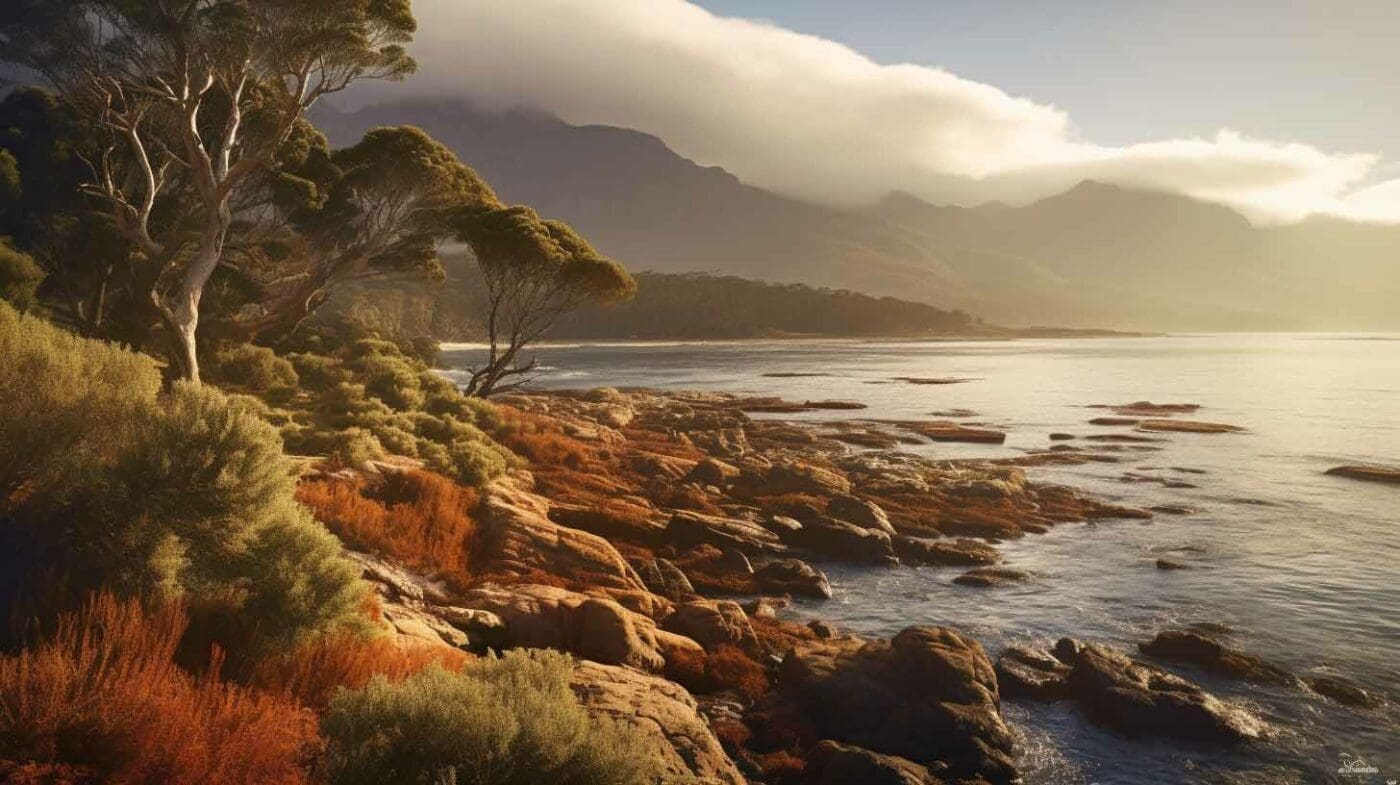




 Week 1: Devonport to Cradle Mountain – An Adventurous Start to a Tasmanian Road Trip
Week 1: Devonport to Cradle Mountain – An Adventurous Start to a Tasmanian Road Trip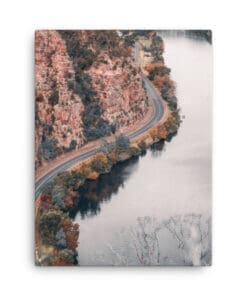



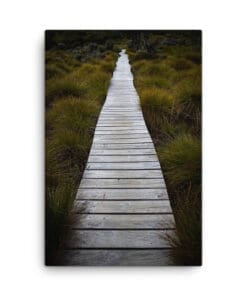



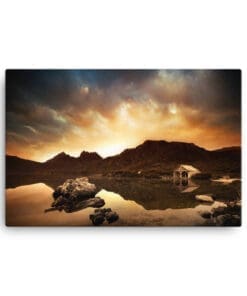



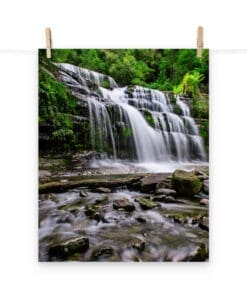



 Week 2: Cradle Mountain to Strahan – Embracing the Rugged Wilderness of Tasmania’s West Coast
Week 2: Cradle Mountain to Strahan – Embracing the Rugged Wilderness of Tasmania’s West Coast Week 3: Strahan to Hobart – Journey into Tasmania’s Historical Heart
Week 3: Strahan to Hobart – Journey into Tasmania’s Historical Heart Week 4: Hobart to Port Arthur – A Historical Odyssey through Tasmania’s Rich Past
Week 4: Hobart to Port Arthur – A Historical Odyssey through Tasmania’s Rich Past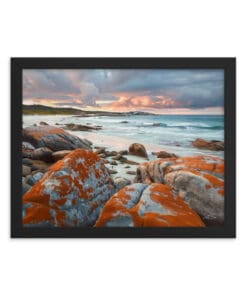

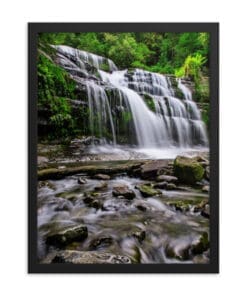

 Week 5: Port Arthur to Freycinet National Park – A Voyage into Tasmania’s Coastal Splendours
Week 5: Port Arthur to Freycinet National Park – A Voyage into Tasmania’s Coastal Splendours Week 6: Freycinet National Park to Launceston – The Finale Amid Tasmania’s Northern Highlights
Week 6: Freycinet National Park to Launceston – The Finale Amid Tasmania’s Northern Highlights